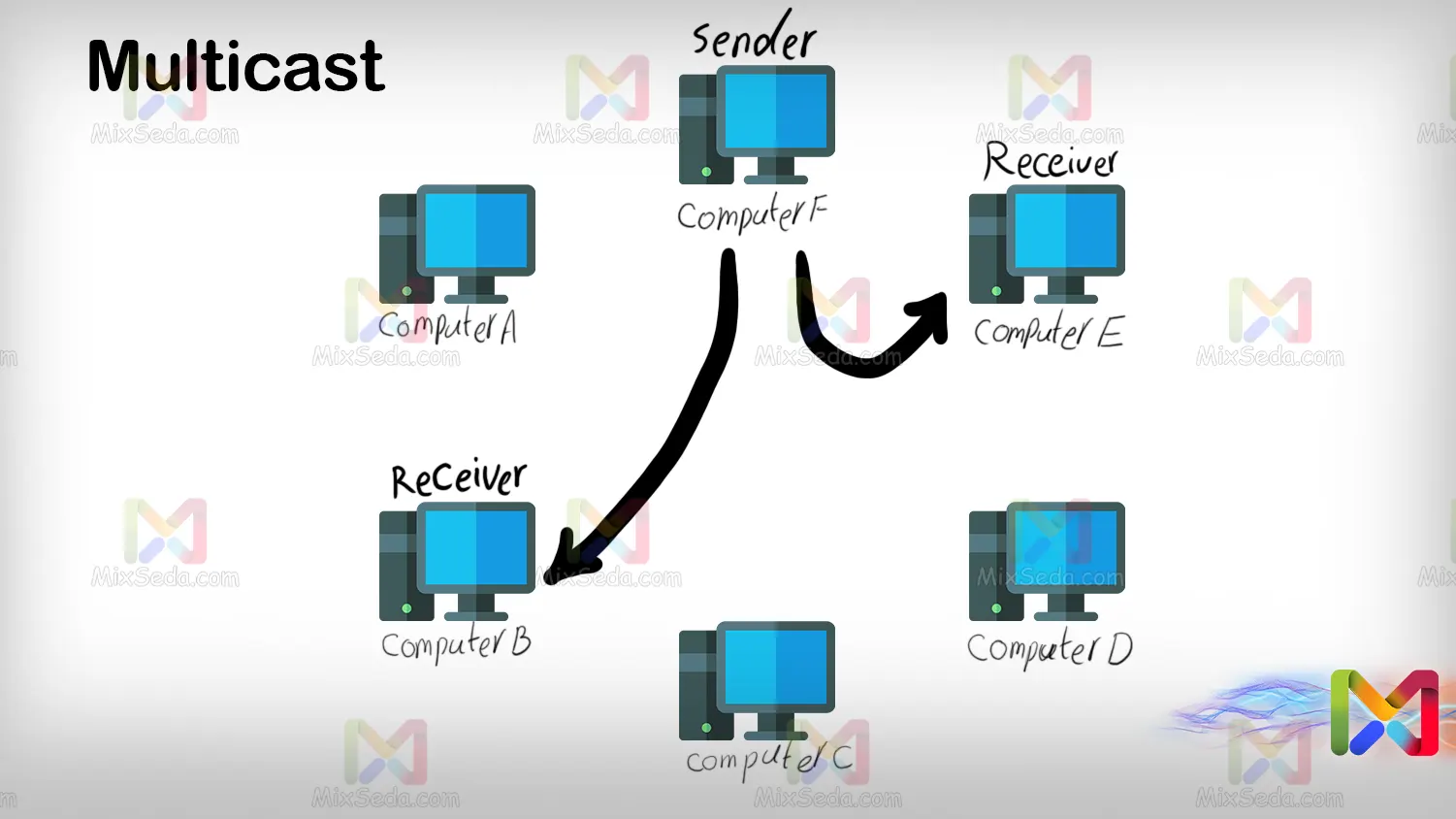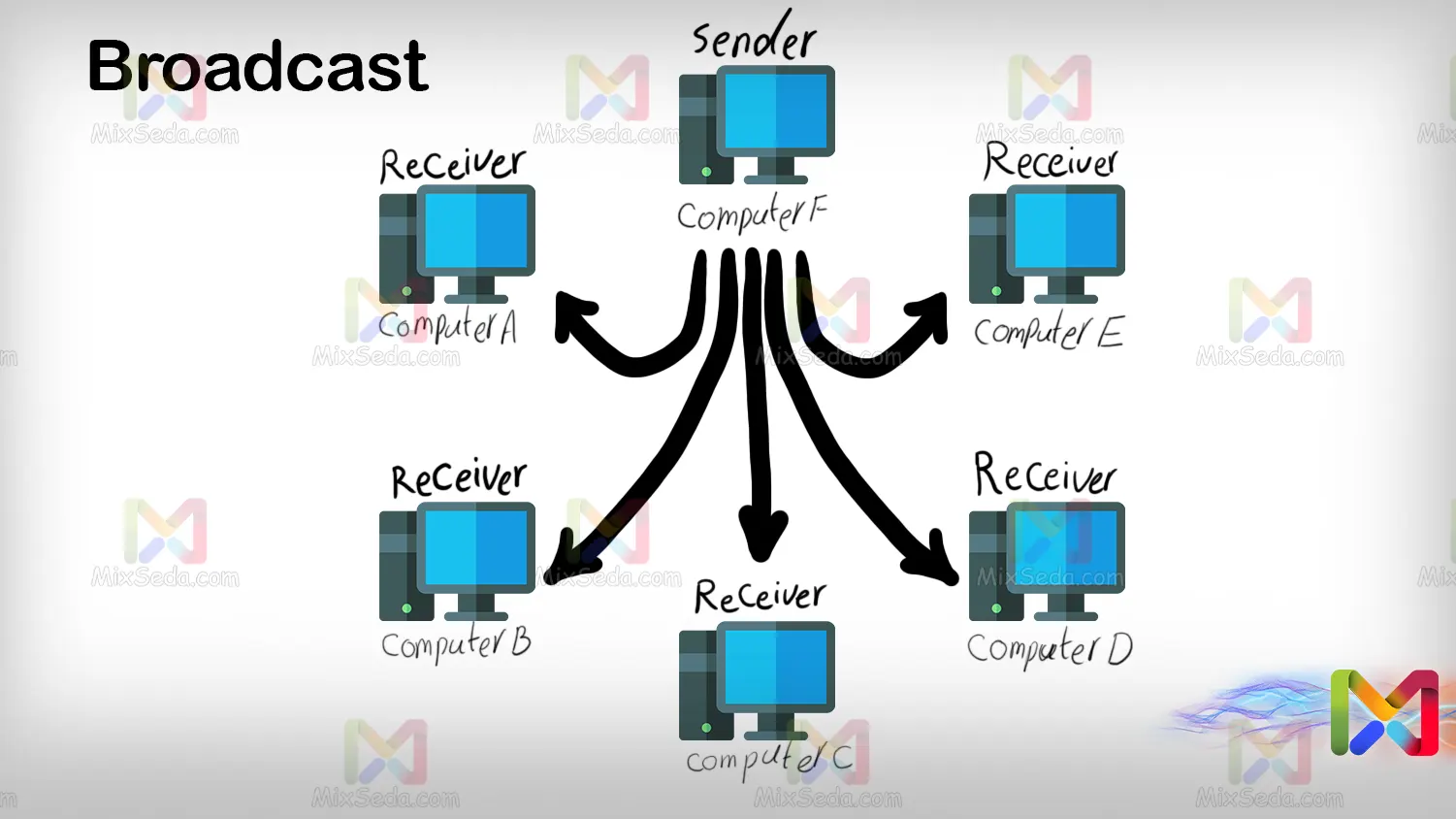
In previous articles we talked about the classification of computer networks in terms of geography and the types of computer networks in terms of topology. In general, networks can be divided into 4 types:
- Geographical scope of computer networks
- Network topologies
- Management of computer networks
- Logic and architecture of computer networks
Today we will talk about the logical classification of computer networks. Computer networks are logically divided into three categories:
- P2P
- Multicast
- Transmission
When we say logical classification of networks, we are talking about information transmission technology. Below, I'll explain each of these categories to you.
P2P
Sometimes this category is known as Peer to Peer, Point to Point and unicast. Indeed, it is very easy to define P2P networks, these networks are created by connecting two hosts directly to each other.
In peer to peer networks, one of the biggest challenges is finding the shortest path between two computers. This type of logical connection and categorization of opinion is also called as.

Multicast
Multicast is another type of computer-to-computer communication, in which one computer communicates with multiple computers. In this type of communication, the computer responsible for sending the information knows exactly which computer to send the information to.
In multicast and P2P networks, the most important issue is that the source and destination computers must exist and be known. For example, as you can see in the following figure, computer F only sends data to recipients, i.e. computers B and E.

Broadcast
Broadcast networks are exactly the same as multicast networks, except that in broadcast networks it doesn't matter if the target computers exist or not.
Imagine that a computer transmits some information using radio waves. In practice, it does not matter to this computer whether the target computers to which this information is sent are available on the network or not; And the sending computer is only responsible for sending the information.
A similar example to this type of computer networks are analog television networks; where analog waves are sent to everyone through a transmitter. Now, if you are online, you will receive this information and if you are not online for any reason, you will not receive this information.
A similar thing happens in computer networks; When a packet is broadcast on your network. Anyone actively on your network will receive that packet.

Of course, if we want to be more precise and technical on this topic, let's say that every computer located in the collision domain will receive this network packet.
Each of the logical network types we mentioned above are designed for their own applications. For example, Broadcast is used in the DHCP service, which we will explain in the future.
Or you will become familiar with a service called WDS that uses Multicast in MCSE classes. I would like to give you a brief explanation about this service.
WDS stands for Windows Deployment Services; It is a Microsoft service that allows you to install a system on multiple computers at the same time.
For example, imagine you want to install a single operating system on 10,000 computers with drivers and software that you have already provided. In fact, if you plan to do it manually, you could be involved for months.
However, using the WDS service, you have the option of installing the operating system on several thousand computers at the same time, and if you have the necessary facilities for this service, this work will be completed in one day.
